This Honey-colored Italian Town Has Cobblestone Streets, an Under-the-radar Wine Scene, and Stunning Beaches Close By
Lecce is sometimes called the "Florence of the South," but the city is so much more than that.
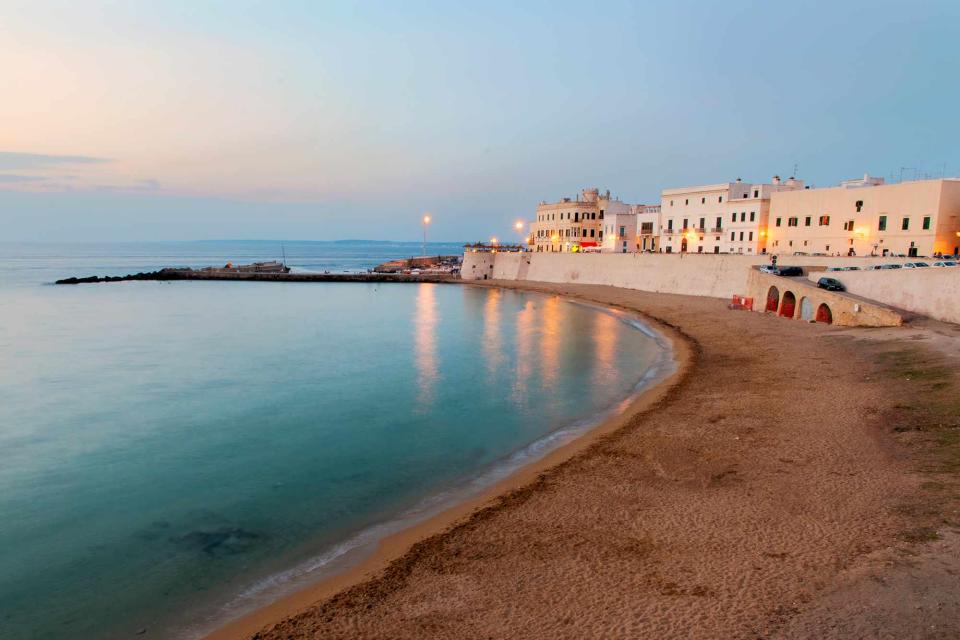
Alessandro Boschi/Getty Images
I recently wandered through Italy’s heel, Puglia, to pursue my version of an "eat, pray, love" summer. Determined to explore as much of the region as possible, I hopped cities and, for my final stop, I settled on a town in Italy’s southern Apulia region that many call the "Florence of the South": Lecce.
I didn't know much about Lecce apart from having seen images of its sapphire waters and alluring grottos, and that it's often a base for travelers heading to nearby towns like Ostuni and Monopoli. But by the end of my stay, I was a firm believer that the ancient golden baroque city was a must-visit for anyone in the area.
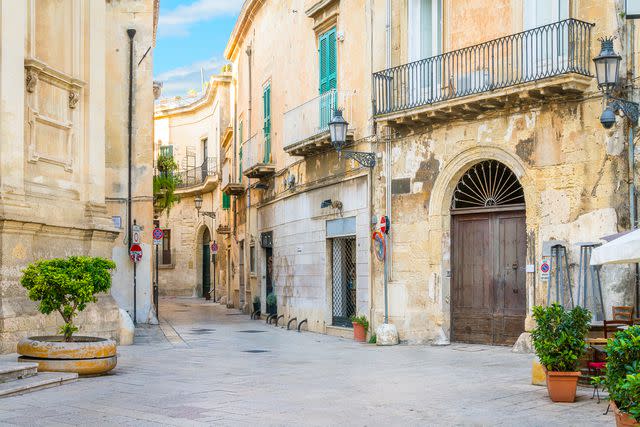
e55evu/Getty Images
I stayed at Palazzo De Noha, a 15th-century mansion that sits in the heart of the city near famous landmarks like Piazza Sant’Oronzo and Piazza del Duomo. Whenever I walked down the cobblestone road to this historic hotel, I was reminded that I was in a town full of towering relics of yesteryear.
The intimate, 9-room property maintains many of its original structure’s charm. This includes pietra leccese ceilings — a honey-colored limestone from the region — alongside contemporary touches like marble fixtures and the owner’s private art-turned-gallery throughout the space.
The hotel is decorated with luxurious Italian-made design furniture, has high ceilings, and some bathrooms even have spacious Turkish baths. The bougainvillea-filled rooftop terrace and pool offer guests an opportunity to relax with an aperitif after a full day of sightseeing. I, for one, spent most of my breakfasts here, enjoying fresh croissants and conversation with other travelers.
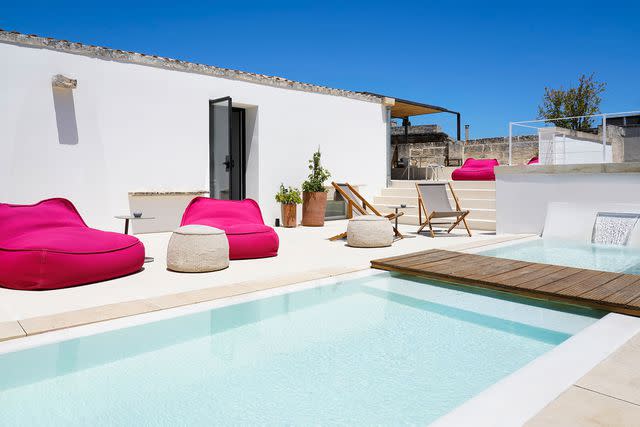
Emanuele Rambaldi/Courtesy of Palazzao De Noha
When walking around Lecce, it's hard not to notice the ornate buildings, each with a distinctiveness so abundant that it has its own moniker: barocco leccese. Over-the-top elements of this architectural style include balconies carved with peering gargoyles and gremlins on gilded buildings. I saw some of the most impressive examples of this style at places like the fantastical Basilica of Santa Croce, which took over 100 years to complete, and Piazza del Duomo, a bustling square that’s enclosed on three sides.
And while towering piazzas with 17th-century architecture reign supreme in Lecce, its maze of narrow cobblestone streets is where you’re sure to find your niche beyond historical relics. Here, goldsmiths like Paola Barrotta sell carefully crafted jewelry, and marbled piazzas buzz with outdoor patrons clinking glasses of Aperol spritz under a cathedral adorned with peering cherub faces.
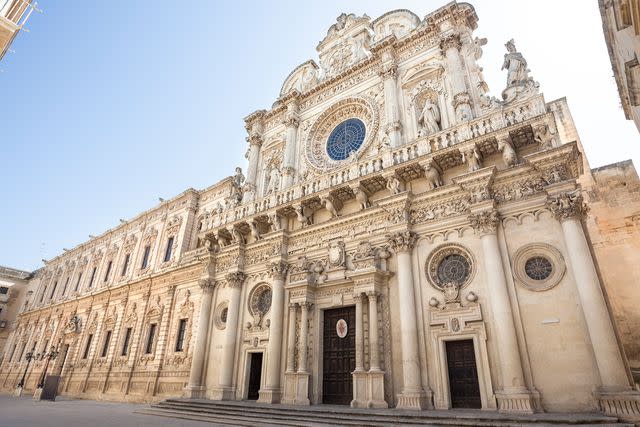
ROMAOSLO/Getty Images
An under-the-radar gem of this region is its wine scene. There's Squinzano Rosso, for example, which is a popular herbal, ruby red wine in Lecce made from the Negroamaro grape. You can take a wine journey through the region or, like me, enjoy a tasting in a city bar at Salento Wine Tour and Mamma Elvira. (Pro-tip: order small plates of roasted porchetta and sauteed chicory at Mamma Elvira and pair it with a glass of Salice Salentino, which is a velvety red wine that put Puglia’s varietals on the map.)
Lecce is known for its cucina povera (which translates to “food of the poor”), reflective of how rural working families used fresh produce and simple ingredients to create delicious meals. Those same inventive recipes that provided fuel back in the day are still keeping people satisfied today at restaurants like Corte dei Pandolfi and La Cucina di Mamma Elvira. (At the latter, you should order the subtly sweet Pugliese burrata paired with sundried tomatoes.)
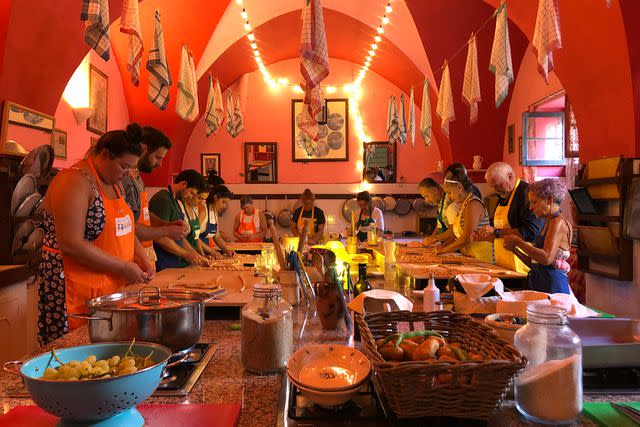
Courtesy of The Awaiting Table
Three unmissable handheld bites ubiquitous around the city include rustico leccese, a golden puff pastry filled with mozzarella, bechamel, and a just touch of tomato; pasticciotto, oval pastries filled with a vanilla custard-like cream that is often served for breakfast; and puccia leccese, a round sandwich bun filled with anything from tuna to mozzarella. (I recommend trying rustico leccese at L’angolino di via Matteotti, pasticciotto at Bar Alvino, and puccia leccese at Pasticceria Natale.)
For hands-on experience with cucina povera and other Leccese specialties, consider taking a cooking class at The Awaiting Table. There's a fish market visit that's coupled with a cooking class, a course on the healthy Mediterranean diet, and even week-long courses for those who want to dig a little deeper.
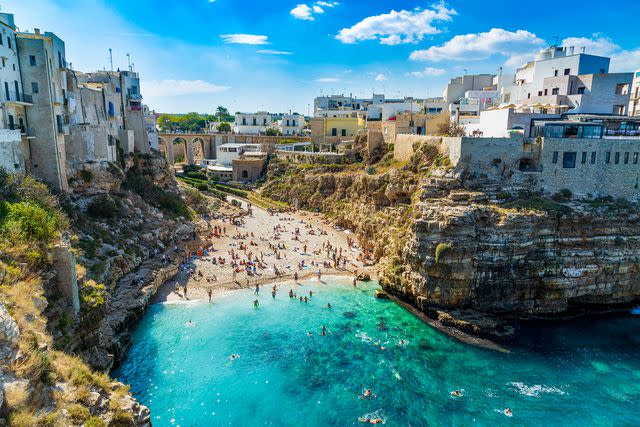
Michal Ludwiczak/Getty Images
Apart from the stellar food and wine scene, which is expected from a destination like Italy, a can't-miss part of going to Lecce is the sparkling sea of the Salento Peninsula. Lecce is less than an hour away from some of the region’s most beautiful beaches. This includes the popular Polignano e Mare, where pebbly sand beaches like Lama Monachine are a haven for topless sunbathers nestled between its two towering coves. There's Baia dei Turchi is a scenic hidden bay surrounded by a lush Mediterranean forest and turquoise waters that’s just steps away from the town of Otranto, which is also worth a visit for its historic buildings and coastline. Also close to Lecce on the Adriatic side is Torre Dell’Orso, fringed by a pine forest with plenty of sand to lounge.
At the end of my three-day stay, I felt it was unfair to refer to Lecce as the "Florence of the South," as it had a unique identity and charm that makes it worthy of its own recognition.
For more Travel & Leisure news, make sure to sign up for our newsletter!
Read the original article on Travel & Leisure.

